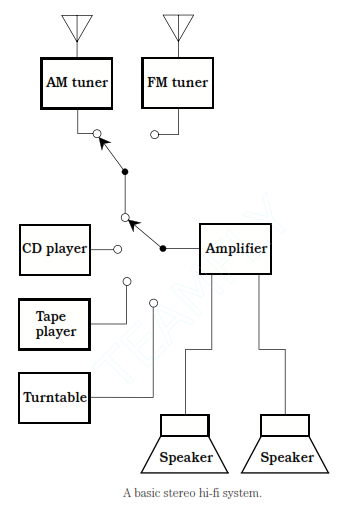The tuner
A tuner is a radio receiver, capable of receiving signals in the standard AM broadcast band (535 to 1605 kHz) and standard FM broadcast band (88 to 108 MHz). Tuners do not have built-in amplifiers. Although they can offer enough power to drive a headset, an amplifier should usually be added if you want to use the speakers.
Modern hi-fi tuners are synthesized, deriving their frequency from the quartz crystal and phase locking circuits. When the station is received, the circuit tunes itself automatically and stays on the exact correct frequency. This is significant for good fidelity, especially in FM stereo. There are 2 types of frequency readout: analog and digital. The analog readout resembles the slide rule; digital readout displays the frequency in numerals, usually ranging from around 540 to 1600 in increments of 10 for AM (representing kHz) or from around 88.1 to 107.9 in increments of 0.2 for FM (representing MHz).

Most tuners have many memory channels. These are programmable, and allow you to select your favorite stations with the push of a single button, no matter where stations happen to be in the frequency band. Some tuners have seek and scan modes which allow the radio to automatically search band for any station strong enough to be clearly received. Commercially manufactured tuners have CD and tape players built in.